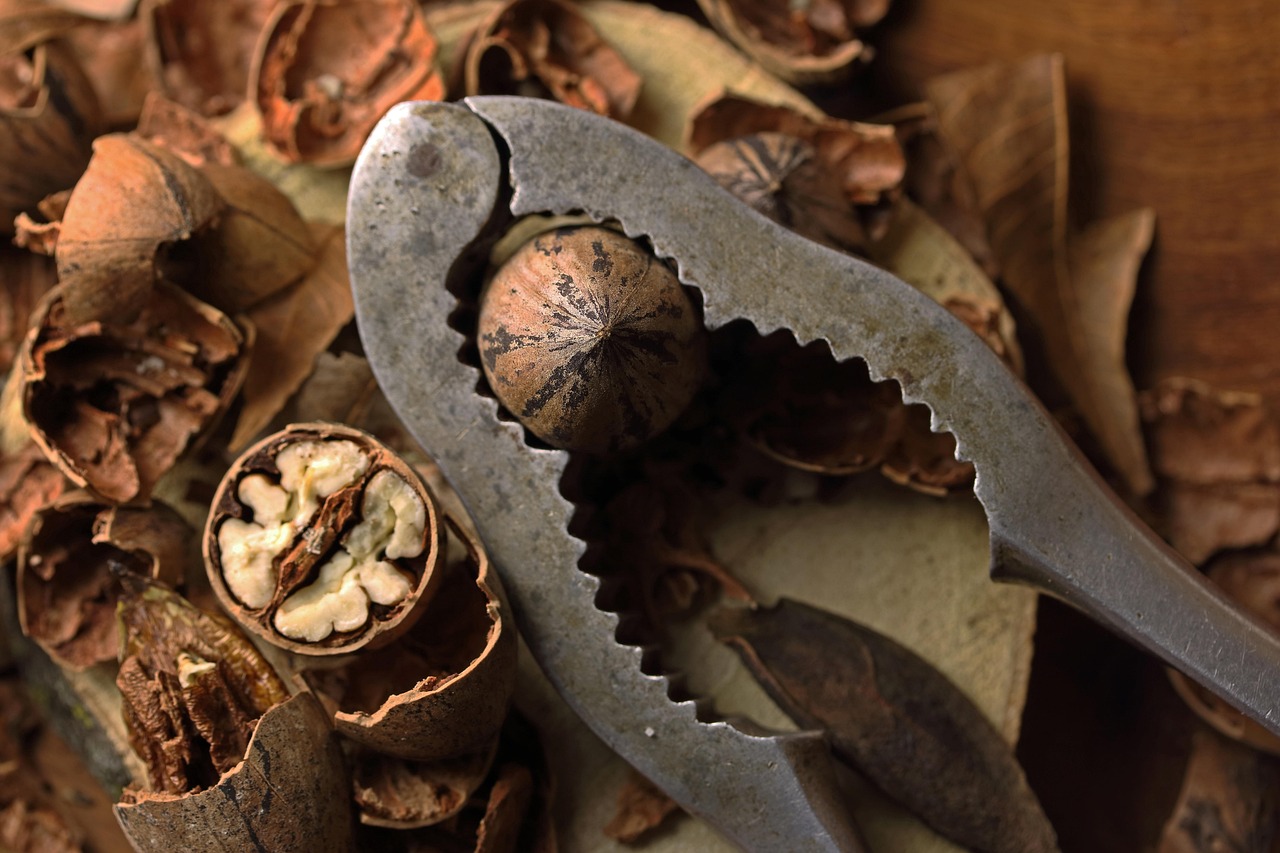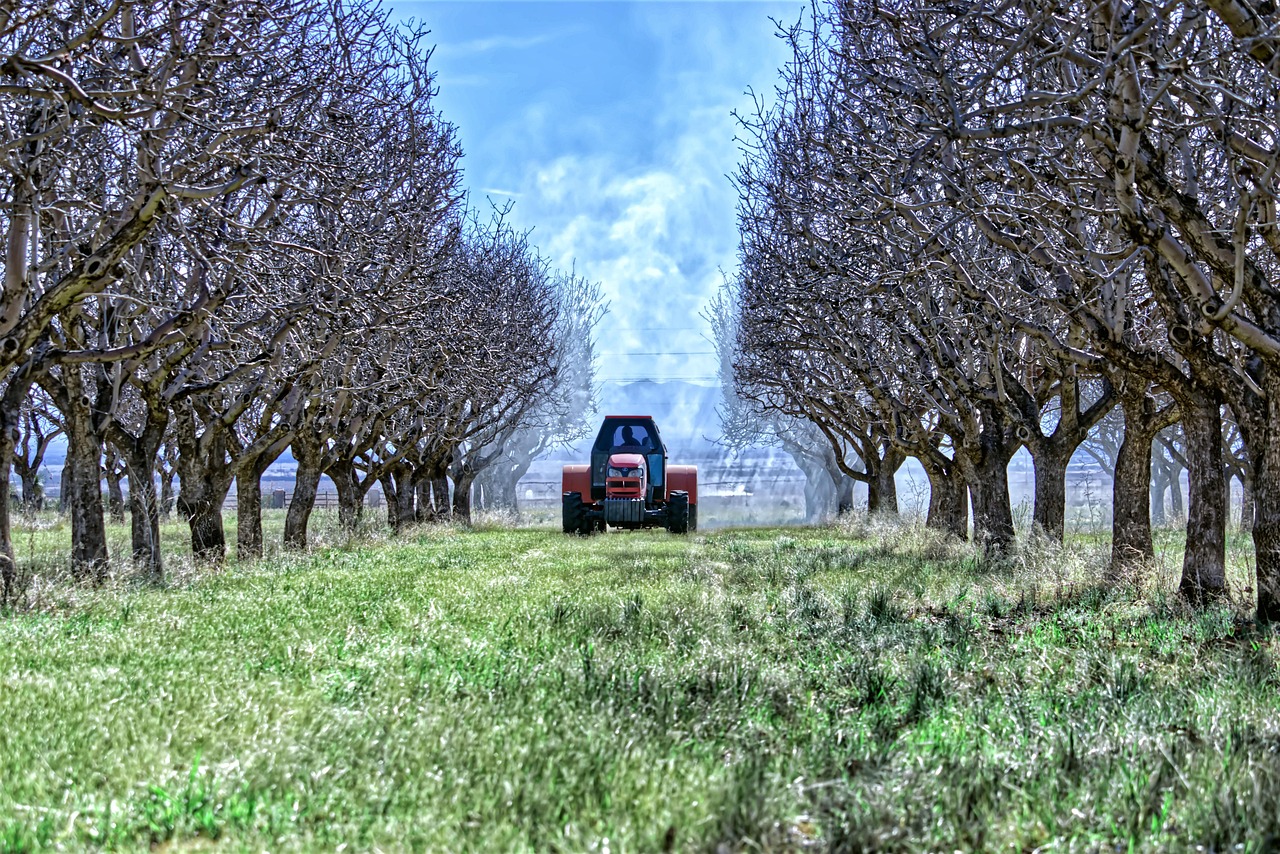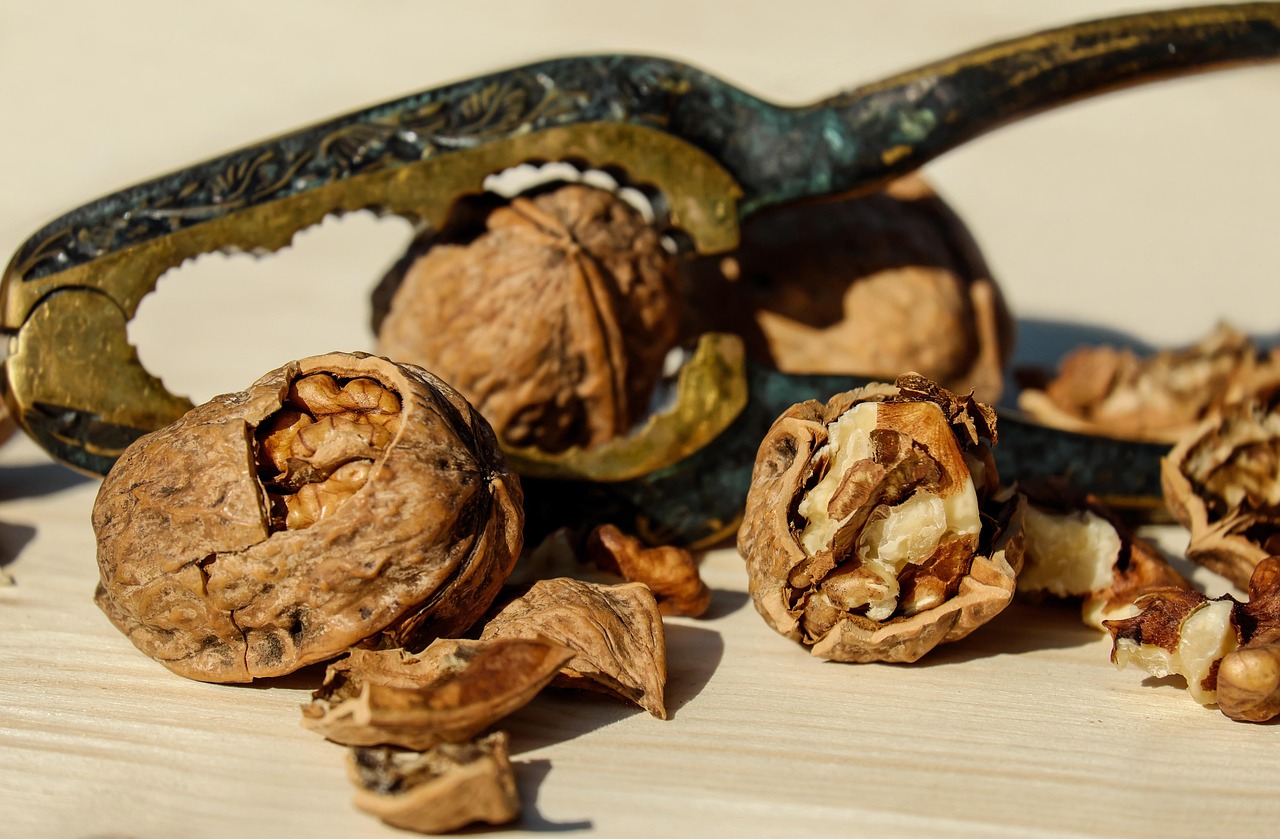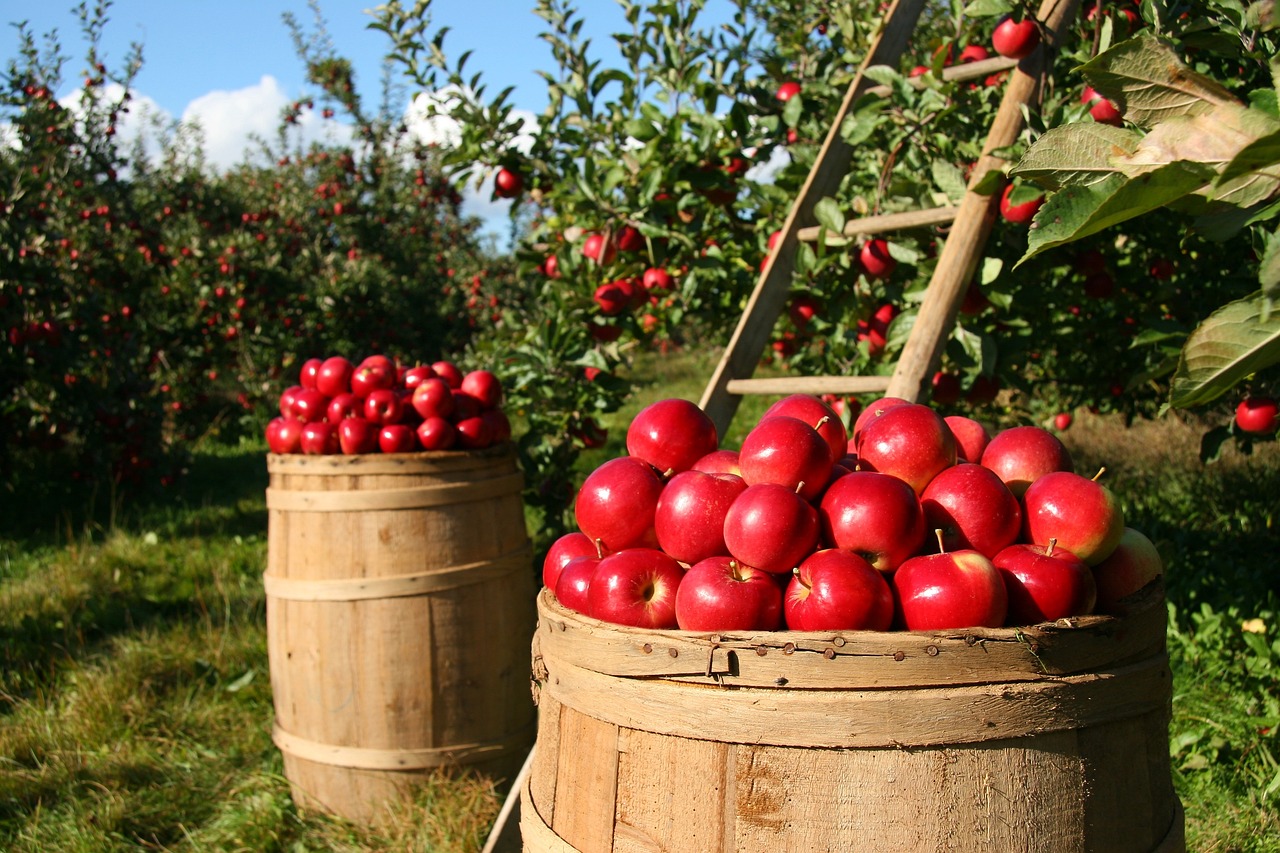Pruning nut orchards effectively boosts tree health and nut production, but common mistakes like incorrect timing or cutting techniques can undermine these efforts. Understanding the unique growth patterns and needs of almond, walnut, and pecan trees helps tailor pruning practices, maximizing yields and reducing disease risks for a thriving orchard.
Pruning is a vital practice in maintaining healthy nut orchards. It influences the growth, productivity, and longevity of nut trees. Proper pruning encourages better air circulation, sunlight penetration, and nutrient distribution. However, many orchardists face challenges that lead to common errors in this process.

One of the most significant issues is the timing of pruning. Pruning at the wrong time can hinder a tree’s growth and fruiting capabilities. For example, late winter or early spring is typically the best time for pruning most nut trees. This timing helps avoid damage from frost while ensuring that trees are still dormant. Pruning too early or too late can cause stress to the tree, leading to poor growth and lower yields.
Understanding Nut Tree Growth
To avoid errors, it is crucial to understand how nut trees grow. Nut trees such as almonds, walnuts, and pecans have specific growth patterns and requirements. Each species has its unique characteristics that influence how and when they should be pruned.
| Nut Tree Species | Optimal Pruning Time | Growth Characteristics |
|---|---|---|
| Almond | Late Winter | Fast-growing, requires open canopy |
| Walnut | Early Spring | Moderate growth, prefers minimal cuts |
| Pecan | Late Winter to Early Spring | Slow-growing, needs structural pruning |
Another common error in pruning nut orchards is using incorrect cutting techniques. The way cuts are made can significantly affect how a tree heals and how well it recovers from the pruning process. For instance, making clean cuts at the right angle encourages faster healing. Conversely, jagged or uneven cuts can lead to increased exposure to diseases and pests.

Additionally, many orchardists fail to consider the overall health of their trees before pruning. Neglecting to assess tree health can lead to removing branches that are crucial for the tree’s vitality. For example, cutting back healthy branches in favor of thinning out weaker ones can reduce the tree’s ability to produce fruit.
The Importance of Tree Structure
Maintaining proper tree structure is essential in nut orchard management. A well-structured tree allows for optimal light penetration and airflow. This is crucial for nut development and disease prevention. When pruning, it is important to focus on shaping the tree correctly rather than simply reducing its size.
- Remove dead or damaged branches first.
- Thin out crowded areas to improve airflow.
- Avoid excessive cutting of healthy branches.
- Maintain a central leader for better structure.
Properly managing the shape and structure of nut trees can also help reduce the occurrence of common pests. A balanced canopy allows for better sun exposure, which can deter certain insects while promoting healthier fruit development.

Another frequent mistake is overlooking the specific needs of different nut varieties. Each type of nut tree has its own ideal growth conditions and pruning requirements. Failing to recognize these differences can lead to suboptimal results in yield and fruit quality.
Signs of Improper Pruning
Identifying signs of improper pruning is crucial for correcting mistakes early on. Some common indicators include:
- Poor fruit set in the following season.
- Dieback of branches.
- Excessive sprouting from previously cut areas.
- Pest infestations due to weak tree structure.
If orchardists notice these signs, it may be necessary to adjust their pruning techniques in the future. Learning from past experiences can lead to improved practices and healthier nut orchards overall.

The complexity of pruning nut orchards requires careful consideration and knowledge. By understanding the common errors and their implications, orchardists can enhance their practices and ultimately achieve better results in their nut production efforts.
Pruning Techniques and Their Impact
The techniques used in pruning nut orchards play a crucial role in determining the health and productivity of the trees. Different methods can lead to varying outcomes, making it essential for orchardists to understand these techniques. Using the right approach can enhance tree structure, promote fruiting, and minimize disease risk.
Common Pruning Techniques
Several techniques are commonly employed in pruning nut trees. Each has distinct advantages and is suited for specific situations:
- Thinning: This technique involves removing selected branches to improve air circulation and sunlight exposure. Thinning can reduce competition among branches, leading to healthier growth.
- Heading Back: This method shortens branches by cutting them back to a lateral bud. Heading back encourages new growth and can help manage tree height.
- Clean-Up Pruning: This focuses on removing dead, diseased, or damaged branches. It is essential for maintaining tree health and preventing the spread of diseases.
- Structural Pruning: Aimed at developing a strong framework, this technique involves shaping young trees to achieve the desired structure. Proper structural pruning can lead to better fruit production in the long term.
Choosing the Right Technique
Choosing the right pruning technique depends on various factors, including tree age, species, and overall health. Young trees often benefit from structural pruning to establish a solid base. In contrast, mature trees may require thinning or clean-up pruning to maintain health and productivity.
Additionally, understanding the growth habits of specific nut tree species is vital. For example, almond trees thrive with aggressive thinning, while walnut trees might only need light clean-up to promote optimal growth. Recognizing these differences helps orchardists select the most effective methods.
Tools and Equipment for Pruning
The right tools are essential for successful pruning. Using appropriate equipment not only makes the process easier but also minimizes damage to the trees. Here are some essential tools for pruning nut orchards:
- Hand Pruners: Ideal for small branches, hand pruners are essential for precision cuts.
- Loppers: These are used for cutting thicker branches that are beyond the reach of hand pruners.
- Saws: For larger branches, a pruning saw is necessary. It allows for clean cuts that help trees heal quickly.
- Stickers or Extension Poles: These tools help reach higher branches without needing a ladder.
Before using any tools, ensure they are sharp and clean. Dull or dirty tools can cause jagged cuts that may harm the tree or spread diseases. Regular maintenance of pruning tools is crucial for effective orchard management.
The Role of Disease Management in Pruning
Disease management is another critical aspect of pruning nut orchards. Proper pruning techniques can help reduce the risk of diseases and pests that threaten tree health. Here are some strategies to consider:
- Remove Diseased Wood: Always inspect trees for signs of diseases prior to pruning. Removing infected branches can help prevent the spread of pathogens.
- Disinfect Tools: Clean pruning tools with alcohol or a bleach solution between cuts and trees to avoid transferring diseases.
- Avoid Overcrowding: Ensure adequate spacing between trees to promote airflow, reducing humidity that can favor disease development.
- Monitor Tree Health: Regularly assess trees for signs of stress, such as wilting or discoloration, which may indicate underlying health issues.
Common Mistakes in Tool Use
Even with the best intentions, mistakes in tool use can lead to problems during pruning. Some frequent errors include:
- Using Dull Tools: Dull tools can tear instead of cut, leading to unnecessary damage.
- Cuts Made Too Close or Too Far: Cutting too close to the trunk can hinder healing, while cuts too far away leave stubs that may die back.
- Lack of Safety Gear: Failing to wear appropriate safety gear can lead to injuries during pruning.
Avoiding these mistakes requires careful attention and practice. Orchardists should take time to familiarize themselves with their tools and continually refine their techniques.
The Importance of Seasonal Considerations
Seasons play a crucial role in determining when and how to prune nut orchards. Each season presents unique challenges and opportunities for tree management.
| Season | Pruning Focus | Considerations |
|---|---|---|
| Winter | Structural Pruning | Trees are dormant; ideal for major cuts. |
| Spring | Thinning | Avoid cuts if there is a risk of frost. |
| Summer | Maintenance Pruning | Focus on removing dead or damaged wood. |
| Fall | Avoid Major Pruning | Prepare trees for winter; limit stress on trees. |
Recognizing seasonal patterns helps orchardists plan their pruning strategies effectively. Adapting practices based on seasonal needs can lead to healthier trees and more abundant nut production.
Understanding Tree Physiology for Effective Pruning
A thorough understanding of tree physiology is essential for effective pruning in nut orchards. Knowing how trees grow and respond to pruning can help orchardists make informed decisions that promote healthy development and fruit production.
Growth Patterns of Nut Trees
Nut trees have distinct growth patterns that influence how they should be pruned. Most nut trees exhibit a strong central leader, which is the main vertical stem. This leader supports lateral branches that grow outwards to capture sunlight. Understanding these growth patterns allows for targeted pruning that enhances tree structure and productivity.
- Vertical Growth: Nut trees generally grow vertically, and maintaining the central leader is critical for healthy growth.
- Lateral Branch Development: Lateral branches should be encouraged to grow at optimal angles to ensure adequate space for air circulation and sunlight.
- Bud Development: Buds on branches will determine future growth. Knowing when to prune can influence bud formation for the next growing season.
How Trees Respond to Pruning
When trees are pruned, they respond in various ways. Understanding these responses can guide orchardists in their pruning practices:
- Compensatory Growth: After pruning, trees often respond with vigorous growth of remaining buds. This is known as compensatory growth and can lead to excessive sprouting if not managed properly.
- Stress Responses: Improper pruning can stress trees, leading to reduced vigor and increased susceptibility to pests and diseases.
- Fruit Production: Pruning influences the amount and quality of fruit produced. Well-timed and appropriate cuts can enhance fruit set in the following season.
Identifying Tree Health Before Pruning
Before initiating any pruning activities, orchardists should assess the overall health of their trees. Identifying signs of distress or disease can prevent further damage and promote better outcomes during the pruning process.
Signs of Healthy Trees
A healthy nut tree typically displays several characteristics:
- Vibrant Foliage: Leaves should be lush, green, and free from discoloration or spots.
- Strong Branches: Branches should be flexible but sturdy, with no signs of dieback or weakness.
- Active Buds: Buds should appear plump and healthy, indicating readiness for new growth.
Indicators of Stress or Disease
If orchardists observe any of the following signs, special care must be taken before pruning:
- Wilting or Discolored Leaves: This may indicate poor health or disease presence.
- Cracked Bark: This can signal physical damage or stress in the tree.
- Pest Activity: Signs of pests, such as holes in leaves or visible insects, should be addressed before pruning.
The Role of Fertilization in Pruning Success
Fertilization plays a significant role in the health of nut trees and their ability to recover from pruning. Providing adequate nutrients helps support new growth, flowering, and fruiting.
Types of Fertilizers
There are various types of fertilizers that can benefit nut trees, including:
- Organic Fertilizers: These include compost, manure, or bone meal. Organic options improve soil health over time.
- Chemical Fertilizers: These are formulated with specific nutrient ratios for quick absorption. It’s crucial to follow application guidelines to avoid over-fertilization.
- Slow-Release Fertilizers: These provide nutrients over an extended period, making them suitable for sustained growth without the risk of burning roots.
Timing Fertilization with Pruning
The timing of fertilization in relation to pruning is essential. Fertilizing immediately after pruning can help support new growth. However, over-fertilization close to pruning time may stress trees. Ideally, fertilization should occur in early spring, allowing trees to utilize nutrients effectively as they begin their active growth phase.
Educational Resources for Orchardists
Orchardists looking to improve their pruning techniques can benefit from various educational resources. Accessing reliable information helps them stay updated on best practices and new findings in tree management.
- Agricultural Extension Services: Local extension services offer workshops, publications, and expert advice tailored to regional conditions.
- Online Courses: Many universities provide online education programs focused on orchard management and pruning techniques.
- YouTube Tutorials: Video demonstrations from experienced arborists can visually illustrate proper techniques and common mistakes to avoid.
By utilizing these resources, orchardists can enhance their knowledge and skills in proper pruning techniques. Continuous learning fosters better practices that contribute to healthy nut orchards and successful harvests.
Common Tools and Resources for Effective Pruning
In addition to educational resources, there are practical tools that orchardists can utilize to improve their pruning practices. Having the right equipment can make a significant difference in the quality of pruning and the overall health of nut trees.
Essential Pruning Tools
Investing in high-quality pruning tools is essential for successful orchard maintenance. Here are some commonly used tools:
- Bypass Pruners: Ideal for cutting small branches and stems, these pruners make clean cuts that promote quick healing.
- Pruning Saws: For larger branches, pruning saws are essential. They allow for precise cuts and reduce damage to the tree.
- Pole Pruners: These tools enable orchardists to reach high branches without the need for a ladder, making them safer and more efficient.
- Tree Ladders: When necessary, sturdy tree ladders provide stability and safety when pruning higher branches.
Maintaining tools is just as important as having them. Regularly sharpening blades and cleaning tools after use prevents the spread of diseases among trees.
Monitoring Tree Health Year-Round
To ensure successful pruning practices, orchardists should monitor the health of their trees throughout the year. This proactive approach allows for timely interventions and adjustments to care routines. Key aspects to monitor include:
- Pest Management: Regularly inspect trees for signs of pest infestations. Early detection can prevent severe damage.
- Fungal Infections: Look for symptoms such as discolored leaves or oozing sap, which may indicate fungal issues.
- Nutrient Deficiencies: Monitor foliage for signs of deficiencies, such as yellowing leaves, which can signal a need for fertilization.
Maintaining a schedule for inspections and treatments helps ensure that trees remain healthy and productive, leading to better results from pruning efforts.
Understanding the Economics of Pruning
Pruning not only contributes to the health of nut orchards but also plays a role in their economic viability. A well-maintained orchard can yield higher quantities and better quality nuts, leading to increased profits. Here are several economic considerations:
- Labor Costs: Efficient pruning practices can reduce labor time and costs associated with maintaining nut trees.
- Increased Yield: Properly pruned trees are more likely to produce higher yields, directly impacting profitability.
- Marketability: Quality nuts harvested from well-pruned trees often attract better market prices due to superior appearance and taste.
Investing time and resources into learning effective pruning techniques pays off through improved orchard performance and financial returns.
The Role of Community in Orchard Management
The support of a community can significantly enhance an orchardist’s knowledge and skills. Engaging with local organizations, such as farming cooperatives or gardening clubs, provides opportunities for collaboration and shared learning. Benefits include:
- Networking Opportunities: Connecting with fellow orchardists fosters an exchange of ideas and experiences.
- Workshops and Events: Participating in community events allows for hands-on learning and expert demonstrations.
- Resource Sharing: Communities often share tools, equipment, and even labor during peak seasons, reducing individual costs.
A cohesive community contributes not only to individual success but also to the overall health and sustainability of local agricultural practices.
Final Thoughts
Effective pruning in nut orchards is a multifaceted process that requires knowledge, skill, and ongoing education. By understanding common errors, utilizing appropriate techniques, and implementing best practices, orchardists can significantly enhance the health and productivity of their trees. Regular monitoring of tree health, investing in quality tools, and engaging with educational resources are essential components of successful nut orchard management.
The key takeaways include recognizing the importance of timing in pruning, understanding tree physiology, utilizing proper tools, managing disease risks effectively, and fostering community engagement. Each of these elements plays a crucial role in ensuring not just the survival but also the thriving of nut orchards. As orchardists continue to learn and adapt their practices, they will be better equipped to meet challenges and maximize the potential of their nut production efforts.
Ultimately, by prioritizing proper pruning techniques and remaining informed about best practices, orchardists set themselves up for lasting success in the world of nut production.
